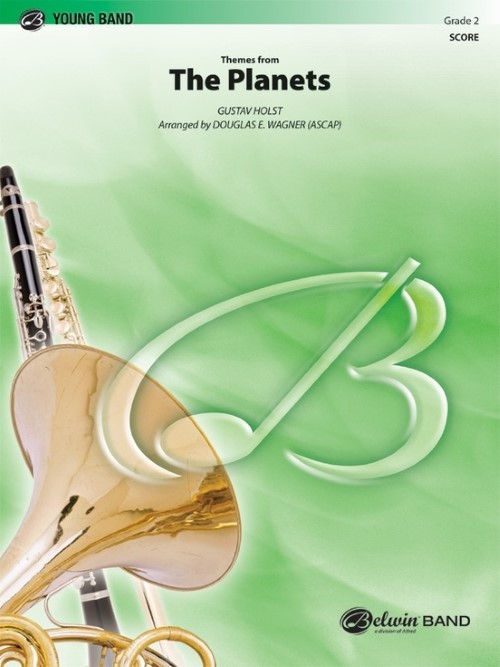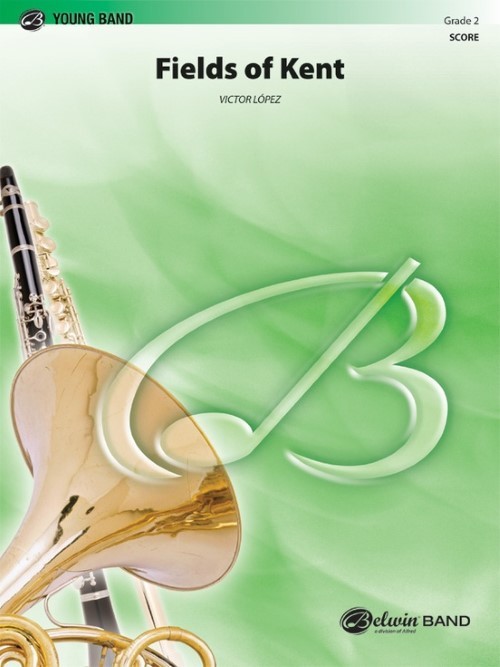Results
-
 £149.99
£149.99Colditz Castle Wind Band Set (Score & Parts)
Written as a commission by the Stichting de Inrichting foundation of Wijk bij Duurstede (the Netherlands), Rob Goorhuis Requiem voor de mens (Requiem for Man) on lyrics by Andr? van Zwieten was composed in the year 2001. This work for choir and wind-band greatly impressed the audience, whilst its composer remained obsessed by its war theme. When he subsequently heard that the Rundfunk Blasorchester from the German town of Leipzig -a place not far from Colditz - was to dedicate a CD to his work, Rob Goorhuis got the idea to process some of the themes from his Requiem for Man into an instrumental composition about the famous Colditz castle. a place still bearing the scars of war. From 1933 to 1934, the castle was a Schutzhaftlager. During the Second World War, it was used as a prison for senior officers. From this prison, many escapes were undertaken, which even resulted in the castle being nicknamed The Escape School. In the seventies, a television-series about this period made the castle very well-known with the public at large.The despondent tone of the opening theme underscores the sadness caused by wars and violence. Nevertheless the works ending is hopeful and triumphant. Peace is celebrated, but with the hope for a lasting peace sadly remaining a topical issue to the present moment. 09:30
Estimated dispatch 7-14 working days
-
 £149.99
£149.99Colditz Castle - Rob Goorhuis
Written as a commission by the Stichting de Inrichting foundation of Wijk bij Duurstede (the Netherlands), Rob Goorhuis Requiem voor de mens (Requiem for Man) on lyrics by Andr van Zwieten was composed in the year 2001. This work for choir andwind-band greatly impressed the audience, whilst its composer remained obsessed by its war theme. When he subsequently heard that the Rundfunk Blasorchester from the German town of Leipzig -a place not far from Colditz - was to dedicate a CDto his work, Rob Goorhuis got the idea to process some of the themes from his Requiem for Man into an instrumental composition about the famous Colditz castle. a place still bearing the scars of war. From 1933 to 1934, the castle was aSchutzhaftlager. During the Second World War, it was used as a prison for senior officers. From this prison, many escapes were undertaken, which even resulted in the castle being nicknamed The Escape School. In the seventies, a television-seriesabout this period made the castle very well-known with the public at large.The despondent tone of the opening theme underscores the sadness caused by wars and violence. Nevertheless the works ending is hopeful and triumphant. Peace iscelebrated, but with the hope for a lasting peace sadly remaining a topical issue to the present moment.
Estimated dispatch 7-14 working days
-
 £194.99
£194.99The Year 1941 - Serge Prokofieff
The Year 1941 was composed during the second World War. Prokofiev, along with other composers, was evacuated to the Caucasus when Germany started attacking the Soviet Union in 1941. It was under such circumstances that Prokofiev began work on this symphonic suite. He was working on his epic opera War and Peace and the String Quartet No. 2 at the same time. It is an orchestral suite in three movements, a poignant and evocative musical depiction of a tumultuous period in history. The composer described these three movements as follows: I. In Battle - "a scene of heated battle, heard by the audience sometimes as though far away and sometimes as though on the actual battlefield."II. At Night - "a poetic night scene, disturbed by the tension of impending conflict. III. For the Brotherhood of Man - "a triumphant lyrical hymn to victory and the brotherhood of peoples."
Estimated dispatch 7-14 working days
-
£134.99
Recalls - Ben Haemhouts
Recalls obviously refers to memories. This piece of music is in fact a series of flashbacks, however, it does not highlight the actual memories of specific thoughts, people or events.The composition evolves around the late Frans Steurs, who for manyyears was the inspirational artist behind the brass band that is currently commissioning this work. The main theme of the work is based on the name STEURS". E = mi, U = do, R = re and S = "si" which is Dutch for the note "ti". This idea forms themusical theme for the entire composition and different variations are used throughout. The structure of the work is based on the concept of a story which father Steurs is telling his two daughters, who play the flute and the clarinet. Each part ofthe work has a story-like character:1. Introduction: following a short ominous intro, the main theme is presented for the first time.2. The Story: father Steurs has both his daughters on his knee and he tells them stories from the old days. Trumpetsand trombones play variations of the theme. The story gets very exciting (accelerande, poco a poco agitato) until the tale takes a dramatic turn when the father tells an exciting story at the time of the Second World War. He tells of being hunteddown by the occupying army and these adventurous episodes are related to us musically in part3. Danger, with its skilful references to "vor dem Sturm" from "Eine Alpensinfonie" by Richard Strauss.4. called Fugitives, is about how he fled in the nightfrom the enemy and this is reflected in the bass tones of a new theme. The aggression of the war is illustrated from bar 117 onwards, by a harsh brass section. The main theme is repeated once again and this time up-tempo. The second theme is broughtonce again from bar 149 onwards.5. Dialogues, depicts the conversations between the two daughters and their father. Father speaks (bar 155); the daughters answer (bar 164 - flute, bar 166 - clarinet); bar 178: father answers with the tune of the maintheme to the two daughters. The discussions gradually intensify but ultimately end in peace in the last part called Conclusion.The piece of music "Recalls" is a free interpretation by the composer who consulted the letters between the two daughtersof Steurs and their father and in this respect it is not really music for a programme."
Estimated dispatch 7-14 working days
-
 £66.95
£66.95Struck by the Ree (A Hero's Tale) (Concert Band - Score and Parts) - Owens, William
Honouring the legacy of Yankton Sioux Chief Palaneapape ("Struck by the Ree") and his tireless efforts to foster peace, this musical tale portrays war, resolution, and escalating tensions. Thunderous percussion and strong melodic statements contrast with gentle and serene moments as William Owens pays homage to an important figure in American history.Duration: 2.45
Estimated dispatch 7-14 working days
-
 £60.50
£60.50The Planets, Themes from (Concert Band - Score and Parts) - Holst, Gustav - Wagner, Douglas E.
Gustav Holst has long been revered as a master composer. His work transcribes wonderfully for concert band. Douglas Wagner has chosen portions of The Planets to create a through-played medley for young band. Now accessible, the arrangement contains the themes from "Venus, the Bringer of Peace," "Mars, the Bringer of War" and " Jupiter, the Bringer of Jollity." The best of Holst scores especially for your young band. Duration: 4:00
Estimated dispatch 7-14 working days
-
 £58.50
£58.50Fields of Kent (Concert Band - Score and Parts) - Lopez, Victor
The mind's eye envisions the history, the heritage . . . the times of war, the times of peace on an historic plain whose serene environment belies the richness of its past. Allow your audience the opportunity to musically see a vista where time records the doings of mankind. A marvelously dramatic work that is supremely atmospheric in final performance. Highly recommended. Duration: 3.30
Estimated dispatch 7-14 working days
-
 £179.99
£179.99Banja Luka (Concert Band - Score and Parts) - De Haan, Jan
Aggression, despair, but also hope for peace can be clearly heard within this work. In Banja Luka Jan de Haan reflects aspects of the former Yugoslavia, stricken by a civil war which brought terrible suffering to the people of this area. Banja Luka was written for the International Horn Festival in Leeuwarden in the Netherlands.Duration: 13:45
Estimated dispatch 7-14 working days
-
 £244.99
£244.99Brabantia Aeterna Wind Band Set (Score & Parts)
In 2006 Brabant will be celebrating it's 900th anniversary. On May 13th 1106 the count Van Leuven was appointed duke of Brabant. This was the birth of the duchy of Brabant. For centuries this duchy, situated in the heart of the Netherlands, was the primary of the seventeen provinces in the Lowlands. Brabant formed with it's capital cities Brussels, Leuven, Antwerp and 's-Hertogenbosch the focal point for politics, culture and economy. The revolution against Spain (1566-1648) caused a fracture between the North and South. The old duchy was divided into a Dutch and Belgian part. Even though each had their own historical background, the bond forged in the past was partially kept alive. To this day we still have a duke of Brabant. Brabantia Aeterna takes you on a musical journey through 900 years of Brabant history. A fascinating journey portraying war and peace, love and grief, prosperity and adversity, development and deterioration. Listen to how monks chanted, bells tolled and churches were built. Or take the thirteenth and fourteenth centuries with their bustling markets, builders of cities or the bleating of countless sheep across the heather. The plague, tribulations, soldiers and political bickering in the following centuries. Hear how the industrialisation of the nineteenth and twentieth centuries provided prosperity for the region and how to this day the following saying still applies: 'the road to Brabant leads to a warmer world' Brabantia Aeterna was commissioned by the Brabantse Bond van Muziekverenigingen (Brabant Music Society) in honour of its fifth anniversary. 17:00
Estimated dispatch 7-14 working days
-
 £204.99
£204.99Credentium Wind Band Set (Score & Parts)
A spectacular dive via an extended chromatic scale immediately submerges us in a charged and somewhat archaic-feeling atmosphere. Trumpets, horns and trombones resound in rhythmic patterns, buttressed by restless motifs in the percussion. A second theme, in the woodwinds, begins much calmer but is quickly pushed aside by that same brass offensive. This introduction is the musical expression of the sometimes tumultuous early history of the town of Peer in Belgium. It closes with a D scale played over two octaves and repeated three times, symbolizing the church steeples that dominate the townscape. Peer has the credentials of a town, and people should know about it.There follows a rhythmic, turbulent passage: in the course of history, Peer has not been spared the ravages of war, arson, occupation, epidemic and other evils. In contrast, a slow, pastoral, lyrical part expresses the periods of peace and prosperity the town has known, as well as the serene geographic setting that still characterizes the place. Various instruments in groups are developed in solo style while the accompaniment displays vast, painterly images of sound. Now and then an exotic intonation is heard: a variety of peoples and cultures have left their mark on the town.This episode of tranquility and peacefulness comes to a sudden end when, via a surprising, almost chaotic transitional passage, we are in effect transported back to our own time. A hopeful, festive march expresses the confidence in the future that the Royal Concert Band of Peer exudes. This confidence is wholly justified: under the direction of conductor Willy Fransen, the 95 members of the concert band have experienced an extended period of good fortune, and the 75 musicians of the youth band - and the 45 little musicians of the mini-band - are involved in thriving operations. 0:13:15
Estimated dispatch 7-14 working days
